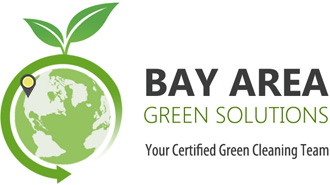LEED Credit Support with Green Cleaning
Incorporating a Green Cleaning Policy in Your Building
Because of the environmental and human health benefits associated with cleaning practices, the LEED® for Existing Buildings (LEED-EB) Rating System has incorporated credits that reward green cleaning. Green cleaning provides an excellent opportunity for enhancing a building's sustainability without expending large sums of money, and is a good start point for greening up your building. The following article considers the benefits green cleaning and the process of implementing a green cleaning program, with insights from Stephen Ashkin, President of the Ashkin Group and member of the USGBC's LEED-EB Committee. The Ashkin Group is a consulting group that promotes and provides services for green cleaning (www.ashkingroup.com).
The Benefits of Green Cleaning
A major benefit of green cleaning is that it minimizes the environmental and health concerns associated with conventional cleaning practices. Many traditional products are derived from non-renewable natural resources and can be toxic to human health and cause long-term environmental problems. It is critical to recognize that the solution to these problems is not to clean less, as cleaning is essential to protecting occupant well being and safety. Rather, the solution is the selection and use of appropriate cleaning and maintenance products. Using cleaning technologies that utilize rapidly renewable derived resources without sacrificing quality, performance, or adding additional cost has tremendous life cycle advantages.
According to Stephen Ashkin, "The introduction of Green Cleaning products and processes can offer enormous economic, environmental and health benefit and LEED-EB provides a roadmap to help put all the pieces of the puzzle together. It's no longer business as usual, but a way to create a sustainable and more productive future with a very handsome return on the investment."
Health Issues
Cleaning products can contribute to indoor air quality problems as volatile organic compounds (VOCs) evaporate and are circulated through the building's ventilation system. Cleaning products can also leave residues that cause eye and skin irritation, can be absorbed through the skin to affect health, can be accidentally ingested to cause poisoning, and can be inadvertently mixed to cause fatal gases and fires. These risks affect the health of building occupants and cleaning workers. Cleaner, safer, healthier buildings boost occupant health and productivity, making green cleaning a sound investment.
Nearly 3.5 million cleaning industry employees in the US are exposed to chemicals and other materials while cleaning and maintaining buildings. Ashkin notes the seriousness of this exposure from a health standpoint, because "many of the older technologies still being utilized in our buildings are formulated using ingredients that are carcinogenic, reproductive toxins, endocrine modifiers, respiratory irritants, and persistent bioaccumulative toxins." LEED-EB addresses the human health dangers associated with cleaning by promoting safer, environmental preferable cleaning products and appropriate training for product users.
Environmental Issues
Cleaning products can cause environmental degradation throughout their lifecycle. Each year, 6 billion pounds of chemicals are used to clean commercial buildings. The majority of these products are formulated from ingredients derived from nonrenewable resources. The consumption of natural resource for cleaning goes beyond cleaning chemicals. Stephen Ashkin states that, "in addition to cleaning chemicals, the commercial cleaning industry consumes approximately 4.5 billion pounds of janitorial paper products which requires the cutting of an estimated 25 to 50 million trees. Not only does this have an enormous impact on forest and related natural systems, but the processing and bleaching of this paper consume huge quantities of water and energy, while the wastes are contaminated with some of the most deadly compounds known to man (i.e. dioxins). The paper products required by LEED-EB are made with post-consumer recycled fiber and encourage chlorine-free bleaching processes and resource minimization."
Once used, cleaning products contribute to air pollution by releasing volatile organic compounds into the air through evaporation. This affects indoor air quality, leading to health problems in building occupants, and also contributes to fog in outdoor air. The use of cleaning products can also contribute to water pollution. Although wastewater treatment systems typically remove chemicals found in cleaning products, inadequately treated water containing cleaning products can be toxic to aquatic species. Also, products containing phosphorus or nitrogen contribute to nutrient-loading in water bodies, lowering water quality (EPA Guide for Federal Purchasers—Greening Your Purchase of Cleaning Products, www.epa.gov/oppt/epp/documents/clean/cleaning.htm).
Economic Issues
Because demand and technology for green cleaning products is growing, in most cases green products are comparably priced with convention products. Any additional investment in green cleaning supplies and equipment is quickly offset by the economic benefits associated with their reduced impact on human health. Custodial workers suffer a high number of injuries in comparison to other job categories, and many of these injuries are a result of exposure to hazardous cleaning chemicals. Green products reduce worker's compensation by lowering injuries, as well as owner liability. Green cleaning practices can also reduce turnover among custodial workers, as a portion of turnover is related to individuals leaving the profession in order to reduce their exposure to toxic chemicals.
Another economic benefit is related to occupant productivity. By replacing products that negatively affect indoor environmental quality, the health and productivity of all building occupants is improved. This reduces absenteeism and health care costs, and improves worker productivity, which leads to increased profitability.

